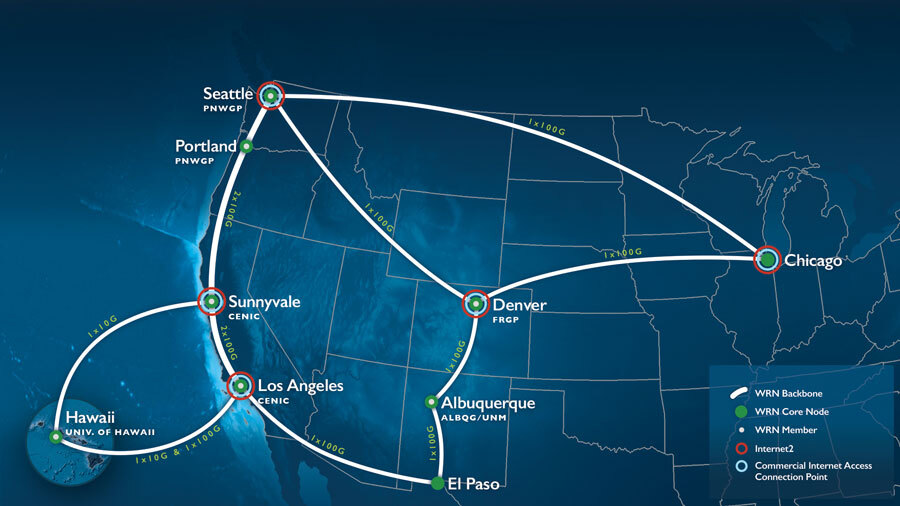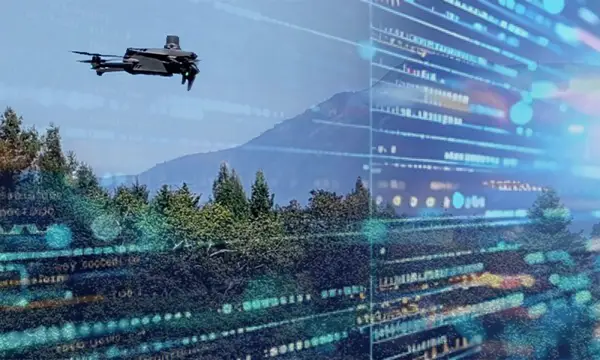- About
- Network
- Community
- Initiatives
- News
- Events
- Blog
- Publications

CENIC's Support for NOAA
Categories Cultural & Scientific RENS & NRENS Pacific Wave
We have come to expect much from those who predict and forecast weather as our ever-changing climate impacts our lives. And those whose job it is to provide us with that information rely on NOAA, the National Oceanic and Atmospheric Administration, within the US Department of Commerce.
Even in 1970, when it was founded, it was clear that weather conditions played a big role in the commerce of the nation – whether that commerce involves oceangoing vessels or large fleets of trucks seeking safe passage on the nation’s highways, subject to high winds or dangerous precipitation.
Today NOAA’s predictive strength is linked to N-Wave, it's network service provider that ensures high quality, highly scalable connections and network solutions to its federal agency via science, research, and education partners across the country.
“With weather, real-time data is key,” said Robert Sears, Director of N-Wave in the NOAA office of the Chief Information Officer. “We work to connect scientists to data as fast and reliably as possible, in order to enable the wide range of NOAA missions, including sharing critical weather data with the public.”
For the past eight years, CENIC has been one of those key partners, adding important network capacity to key locations in California, such as the San Diego pier, where large NOAA vessels dock carrying loads of important data on ocean conditions, charting and other hosted scientific observations.
“We leveraged CENIC to bring network capabilities to the pier in San Diego to provide ready access for our ships to high-speed wide-area connectivity,” said Sears. “We used to have to pull hard drives to get that data off a vessel, and now CENIC’s network ensures the data is transferred directly from the ship.”
The N-Wave map of connections will look familiar to long-time CENIC partners, as many of the N-Wave partners also connect with CENIC. Networks such as the Western Regional Network, the Front Range Gigapop, and the Pacific Northwest Gigapop support connections nationwide.

Working with CENIC engineers, NOAA developed an aggregation site in Sunnyvale, California with diverse high bandwidth connections to the N-Wave core nodes in Denver, Colorado, and Seattle, Washington. That aggregation site allowed NOAA customers to connect into N-Wave at a lower cost and with higher bandwidth connections as needed. And that unique partnership provided connectivity to nine NOAA sites in California, including the National Marine Fisheries Service/Southwest Fisheries Science Center and the National Ocean Service’s Office of Coastal Management.
The National Marine Fisheries Service/Southwest Fisheries Science Center is located on the UCSD campus in La Jolla with access to a 1 Gbps Layer 2 Wide Area Network via the CENIC connection. That connection allows NOAA to manage and implement the US Antarctic Marine Living Resources Program through its Antarctic Ecosystem Research Division, providing key information for US policy for managing and conserving living resources. The connection also supports US participation in international efforts to protect the Antarctic and its marine life.
“This connection in La Jolla has been important for support of the Southwest Fisheries Science Center that provides fisheries management and conserves protected species throughout the Pacific Ocean, and in the Southern Ocean off Antarctica,” said Sears. “On a larger scale the
NOAA National Marine Fisheries line office, through its mission of stewardship of the nation's ocean resources, has had a great economic impact to the tune of 1.8 million jobs, $255 billion in sales, and $117 billion in value-added services.”
Sears noted that the Sunnyvale aggregation site has provided an opportunity for NOAA to connect with Hawaii and its Daniel K. Inouye Regional Center, thanks to the collaborations with the Western Regional Network, University of Hawaii, and CENIC to make it all work.
“For N-Wave, we rely on partnerships forged in trust to grow and extend our network,” said Sears. “It’s one of our most important assets in fulfilling our mission.”
Related blog posts
CENIC Members Enable Data-Driven Agriculture: Optimizing Harvests in a Changing Environment
The use of technology in agriculture to increase yield and decrease resources is the focus of an innovative project fueled by CENIC and its collaborative partners: a novel model of precision agriculture in the vineyards.
The Venue is the World: CENIC Helps SFJAZZ Share Music with Everyone
Learn how Mount Allen shares musical experiences with the public through his role at San Francisco Jazz (SFJAZZ), which uses CENIC infrastructure to livestream performances to classrooms and libraries across the state.


